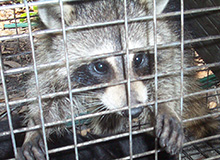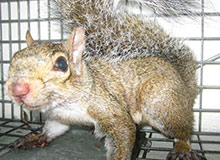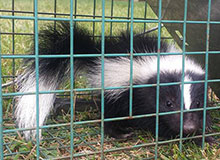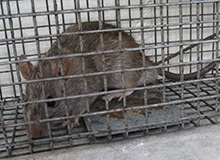Wildlife Trapping Professionals Fort Smith, Arkansas
Call us now at 479-431-5176 for professional wildlife removal services in Fort Smith, AR.

479-431-5176 - Call 24/7
We work 7 days a week - go ahead and call evenings and weekends!
Licensed & Insured
We carry liability insurance and all Arkansas licenses.
Professional Service
Treating both wildlife and customers with courtesy and respect.
We are a professional animal removal company headquartered in Fort Smith, and servicing all of Sebastian County County, AR. We solve problems with wild critters in the home and around the property. We handle animals such as squirrels, raccoons, skunks, rats, mice, opossums, and even snakes,
bats, and birds. We most commonly receive calls about scratching sounds in your attic, or digging in your lawn, or many other critter problems. We not only remove animals, but we provide a wide array of services, from animal damage
repairs, preventative home repairs, attic cleaning, and more. We are fully licensed and insured in Arkansas, and we answer our phones 24/7. Call us now at 479-431-5176 for a free price quote and to schedule a same-day or
next day appointment for animal removal.
Now that we have been voted as the #1 wildlife control company in the area, our next aim is to be the leading service provider for anything related to the wildlife creatures in the nearby states. Our founder established the company more than a decade ago with the simple mission of providing the public with continuing protection against the unwanted visit of the wild animals. We are using the latest technology in the field of wildlife removal to ensure that our customers can enjoy the highest quality of service. We are hiring people who share the same values, and we are encouraging them to complete full training in using and employing internationally-accepted solutions.
About Our Company

Services We Offer
- Wildlife Trapping
- Prevention Repairs
- Attic Cleanup
Best service in Fort Smith
- Superior wildlife control from attic to yard, start to finish.
- Available 24/7 with weekend and same-day appointments
- Humane treatment of animals and professional service for you.
Client Testimonials
-
Thank you for coming to my home on a Sunday to get the snake on my porch - I almost had a heart attack before you showed up!
-
Fort Smith Pest Animal Trapping solved a problem with bats in our building, after two other Arkansas companies failed - and at a price lower than the others! Thank you!
-
My regular pest control company couldn't get rid of my rat problem - these guys cleaned them out in five days! I've been rat-free ever since!
Fort Smith Wildlife Trapper Tip of the Month:
About Chipmunk: Appearance, biology, Life Cycle, Habitat, Diet, Behavior
Various animals are part of the squirrel family including Chipmunk. The means of identifying them range from hairy tail to their stubby legs, then the brown and black stripes which goes across their backs. One standout feature of the Chipmunk is the fact that stripes runs along their trunk which is not like other rodents. They have the least size amidst their family.
What does Their Habitat Looks Like?
Chipmunks are commonly found on trees especially in North America, where they make homes for themselves by making tunnels that consist of an underground passage framework can be 10 to 30 feet (3 to 9.1m) long.
How do They Behave?
In spite of the fact that chipmunks are around one another, they are not social creatures. They are lone rangers who love to mind their own business and just communicate during mating season, which is in the spring. They are generally active at sunset and day break. Chipmunks go through a large portion of their days scavenging.
What does their Lifecycle look like?
It’s interesting to that Chipmunks sleep, although they usually don't store fat to which will be enough for them all through a long winters just as is common amidst bears. The cheekpocket of Chipmunks are used to store fats during months that are warm. There are big pack used to accumulate food. They then take the food contents home to store. Therefore eating them during the winter for strength.
What Do They Feed On?
Chipmunk’s feeds on varieties of food ranging from plants to animals, that confirms the fact that they are omnivores, they are not selective in their diets, they feed on vegetables such as grains, mushrooms, nuts, seeds and berries. Wildlife studies also proves that they feed on animals like frogs, insects, bird eggs and baby birds.
How do They Reproduce?
The female chipmunk mates over and again during an estrus period that last between six or seven hours, and they breed regularly in late – spring and summer, she reproduces between four and six pups, these pups develop within the space of four weeks, after which they open their eyes and start their own lives.
Rabbit Repellents - Types, and do they work?
What kind of damage can Gophers cause?
Are Coyote Dangerous to Humans?





